Karen Lanier takes us through the Park's meandering paths in early spring.
Springtime brings transition, in big and small ways. It’s a time of contrasts and surprising resilience. Everywhere I look at the Park, life is emerging, despite paralyzing cold-snaps, torrential downpours, and extreme winds whipping through.
Yet while new energy surges forward this season, I tend to reflect on my journey each spring. Last April, I joined the Park’s team as a staff member. Ten Aprils before that, I moved to Kentucky from Colorado, leaving a harsh mountain snowstorm and arriving in a blossoming green paradise.
On this early spring morning, I stroll along the Park’s dewy paths and ponder my personal milestones, what has shifted in my life, in the communities that I am part of, and in the world. Even though this morning is calm, I expect to find damage from howling 40 mph winds the night before. Amazingly, most of the Park is intact. Sturdy sculptures designed for outdoor conditions are still standing. Well-established trees with deep roots have held their ground. Tall native grasses bent elegantly but didn’t break.
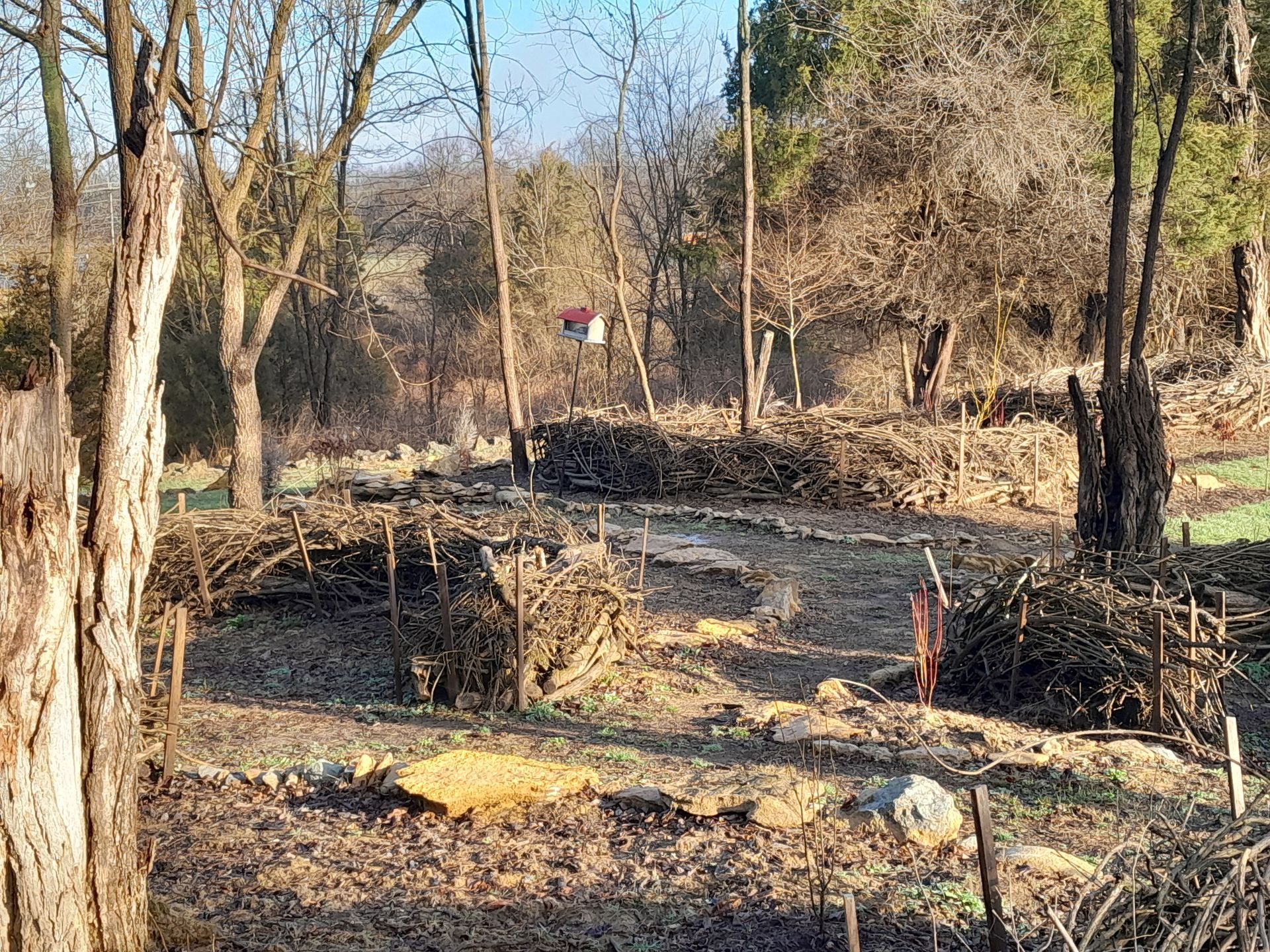
As I move through Metamorpho-nest by Andrea Wilson Mueller, sculpted rooms shaped out of repurposed invasive honeysuckle, I’m aware of the typical reminders of spring like bird songs and budding flowers. But my attention is drawn down to the ground itself. A soft springiness cushions my feet. It feels like a saturated sponge that absorbed last night’s thunderstorm. As I refocus my gaze to the complexity of life at my feet, neon green moss jumps out and demands that I bow down and admire it.
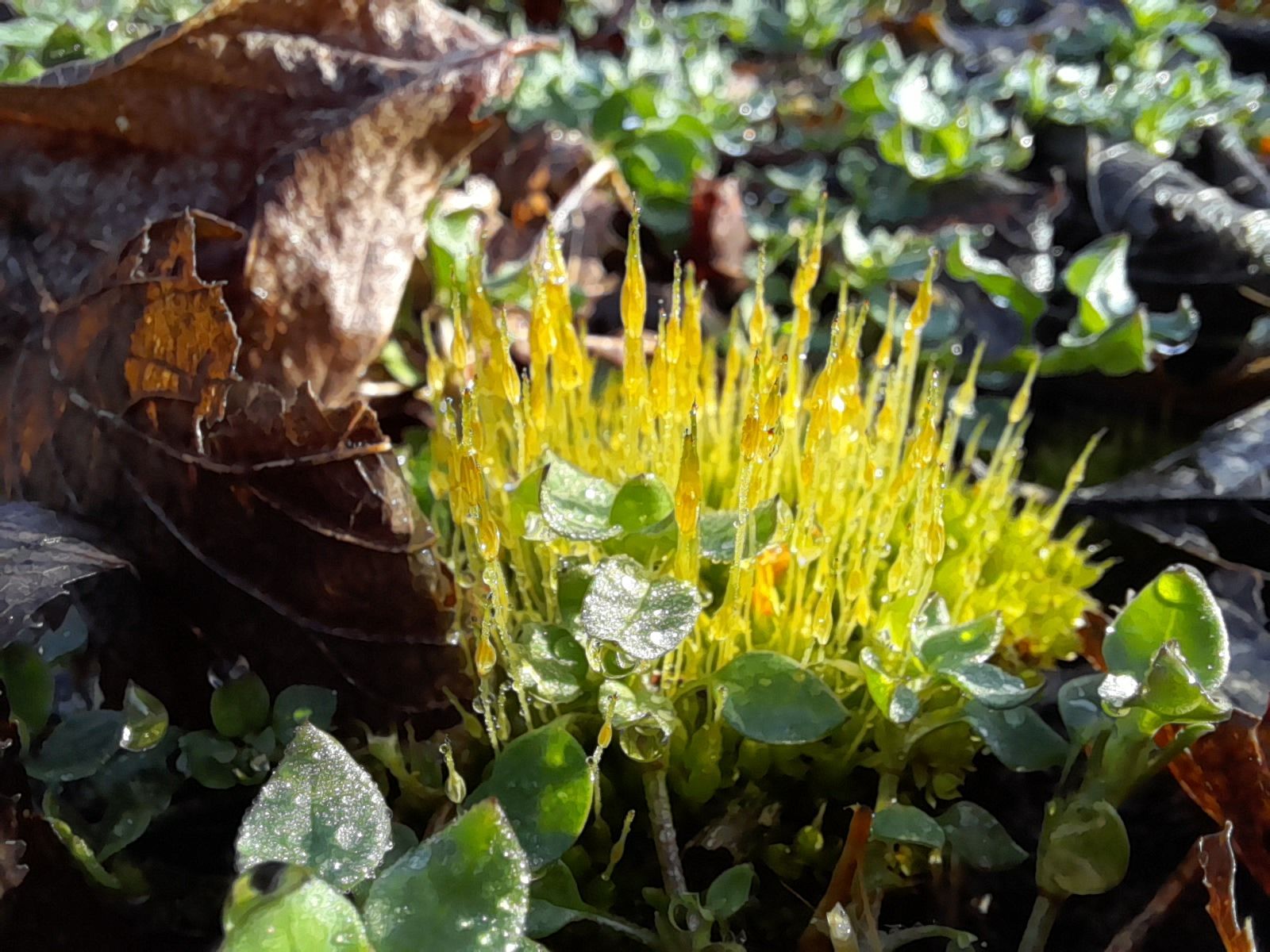
Moving on toward the large metal sculpture behind the nests, the ground firms up and I notice peaks and valleys. The miniature rocky mountains, part of Andrew Marsh’s Scar Garden, hold unexpected opportunities for life to thrive. This sculpted landscape provides the rich resource of edges, prime real estate for funnel weaver spiders. The uneven surfaces give the spiders plenty of places to anchor their fine webs and protect them from human foot traffic. Hidden from view at the bottom of their funnels, the spider sits and waits for an ant or other small prey to tickle their sensitive silk threads, then quickly captures their meal. They don’t even have to go out for water, as their hammock-like webs collect droplets. It surprises me that something so delicate survived the storms. These ingenious creatures get food, water, shelter and space. To me, it seems they’ve got life figured out.
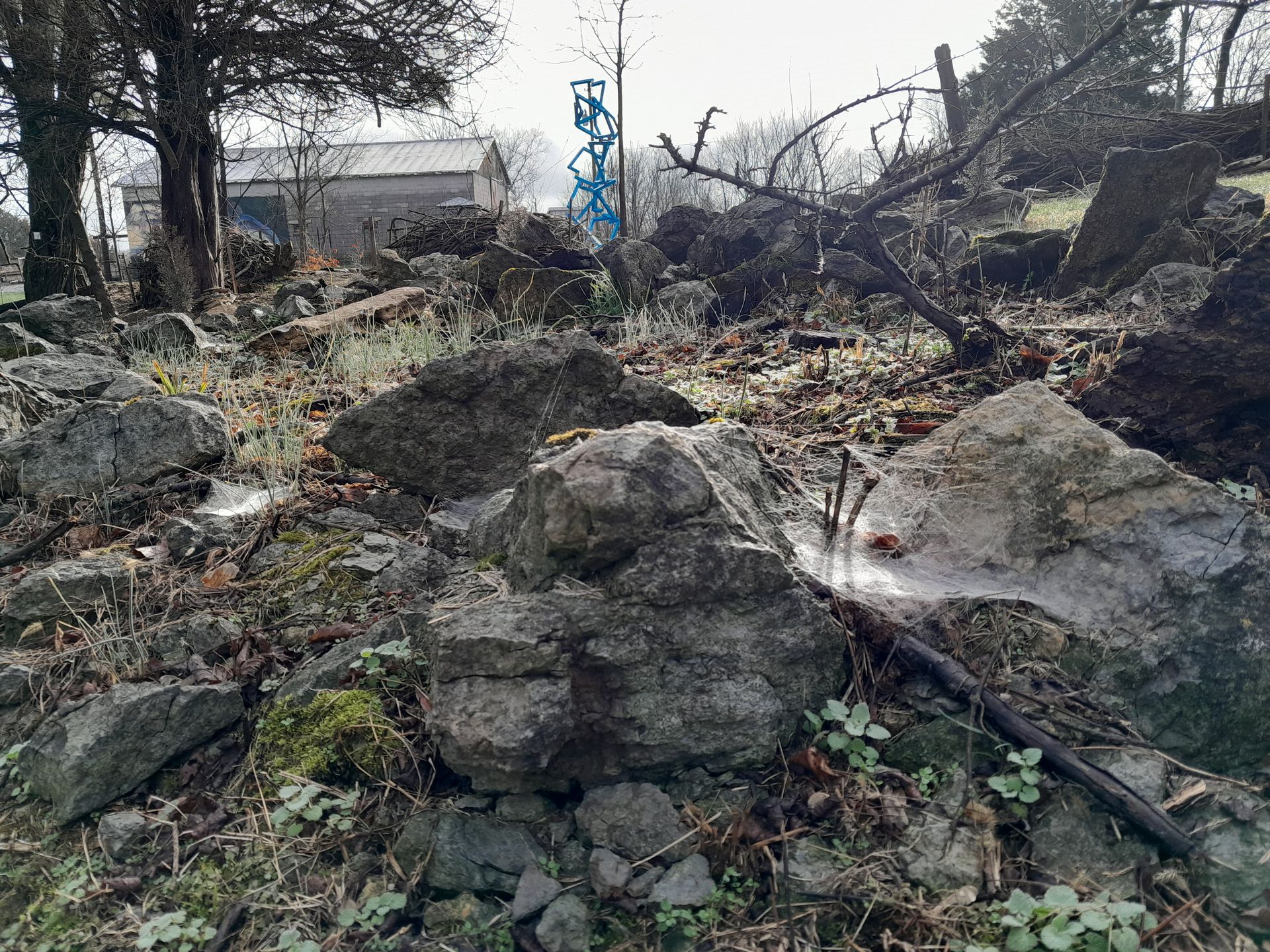
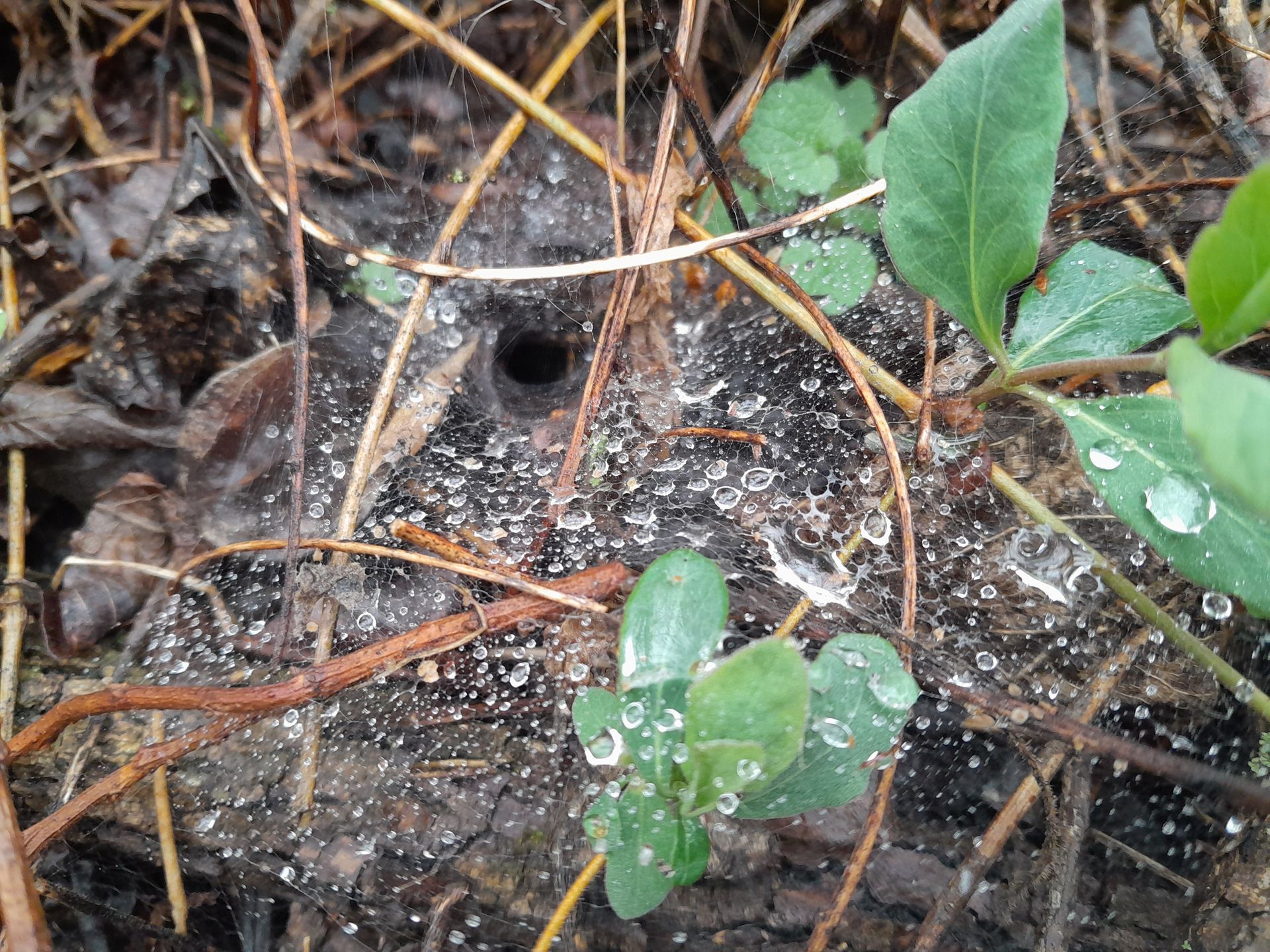
The idea of edges leads me down more meandering, yet connected paths. Edges can be very ecologically beneficial. Where two different ecosystems meet, more biodiversity is often found. Animals that hunt in a meadow can retreat to a forest nearby for shelter and shade, for example. And creativity thrives on the edge, finding inspiration from life in all its forms. At Josephine Sculpture Park, where art meets the earth, the intersection of diverse interests provides multiple points of entry for visual artists, musicians, children, birders, walkers, and art-lovers of all ages and abilities. Best of all, the Park provides the perfect habitat for anyone seeking space to wander down paths, just to see where they lead.
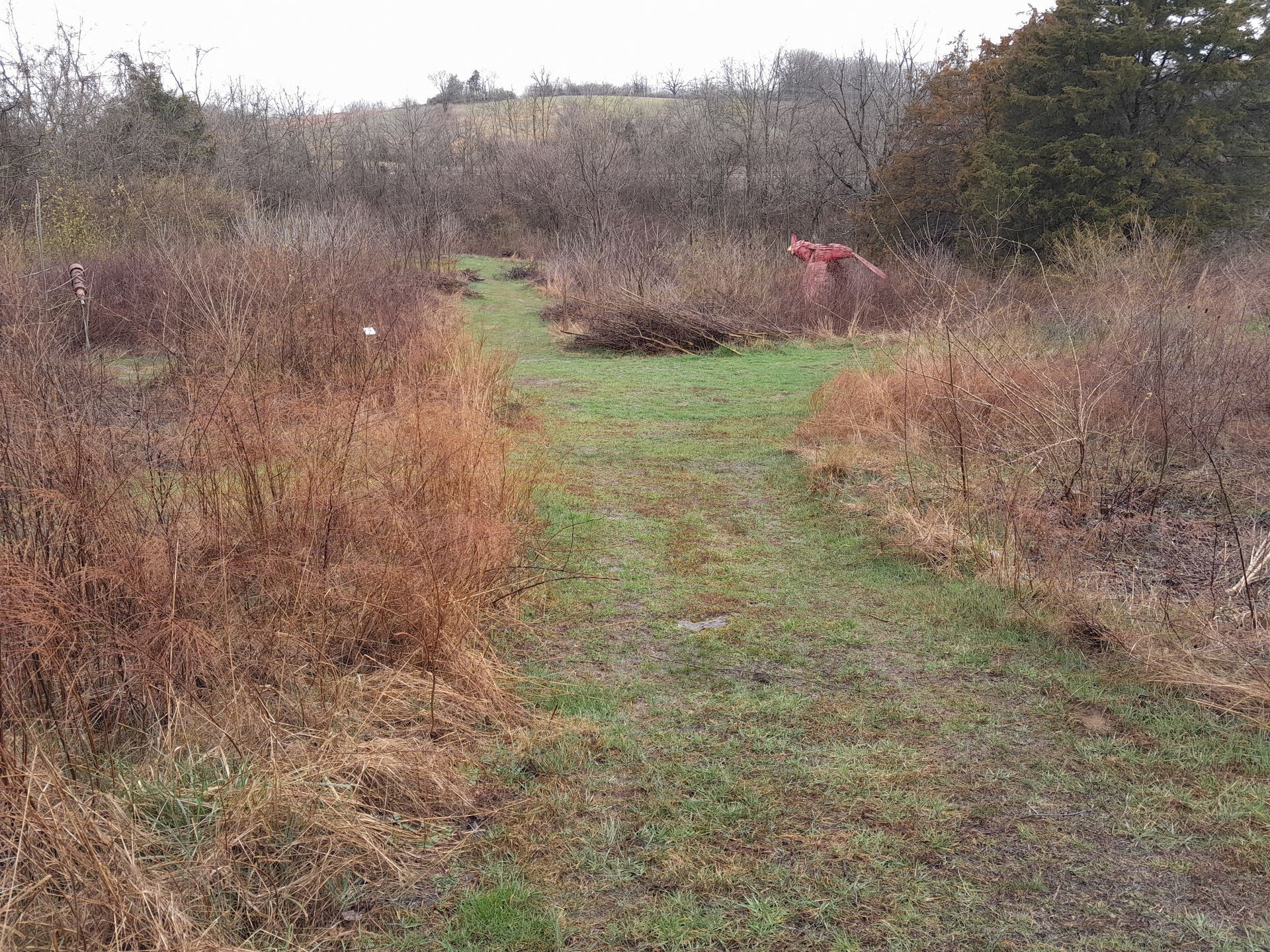
Above: KY Fire-Chicken by Sean Lofton
About the Author
Karen Lanier is a teaching artist, environmental educator and nature writer who also serves as Josephine Sculpture Park’s Administrative Assistant.





